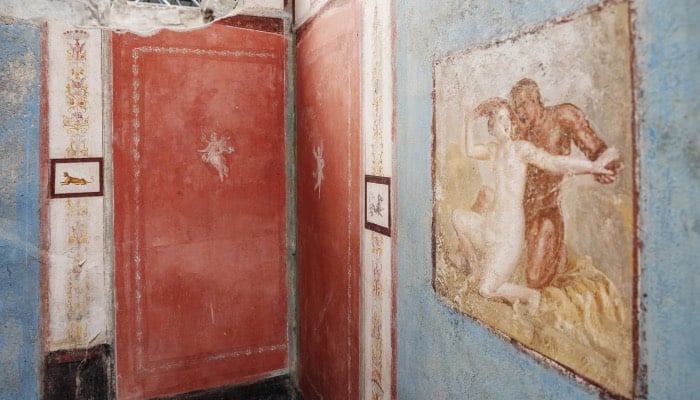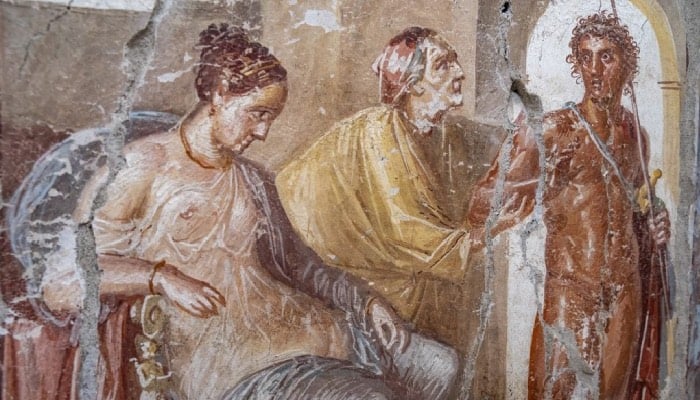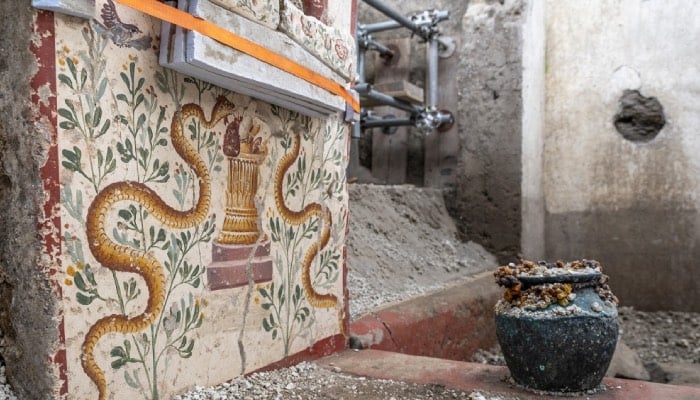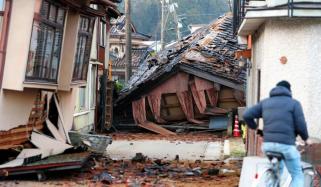
Archeologists have discovered a small house in Pompeii which provides new insights into the iconic decoration styles of Roman homes.
As per CNN, this small house is adorned with detailed and sensual paintings on the wall, a term known as frescoes.
Pompeii's archaeological park announced that the house, located in the central area of the ancient city, is smaller than usual and notably lacks an open central courtyard or atrium, common in Roman architecture.
This latest discovery gave us the chance to understand how wealthy Romans decorated their houses.

Several frescoes illustrate mythical scenes, while others showcase plant and animal designs on a white background.
A small square painting set against a blue wall depicts intercourse between a satyr and a nymph, while another depicts Hippolytus, son of the Greek king Theseus, and his stepmother Phaedra, who falls in love with him before killing himself when she rejected him in disgust.

Moreover, one fresco is believed to illustrate the Judgment of Paris which has suffered damage, while the goddess of love, alongside her mortal lover, Adonis.
Gabriel Zuchtriegel, the park’s director said in a statement, noting, “We have archaeologists, restorers, archaeobotanists here to understand exactly how the ritual of the last sacrifice was carried out before the eruption. There are still the burnt remains of this ritual, there is the knife that was used.”
Pompeii was devastated by the eruption of Mount Vesuvius in AD 79 when its buildings and thousands of inhabitants were buried beneath layers of ash and pumice.
















